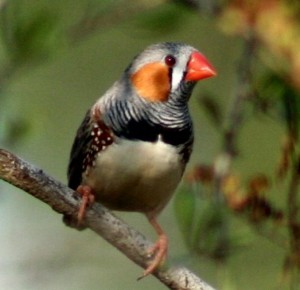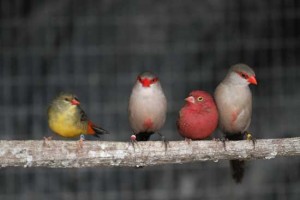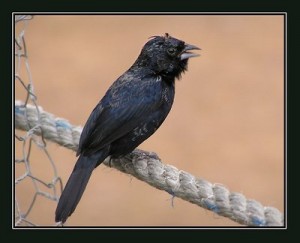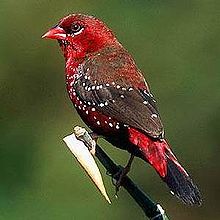Ruddie or Red-billed Firefinch Care
 Found in store, for more details call Birdsville 9667 2555. More information coming soon.
Found in store, for more details call Birdsville 9667 2555. More information coming soon.
Natural distribution and habitat of Ruddie Finches
Native to Africa they have a wide distribution throughout there native homeland from senegal to sudan. Like most finches they can be found close to water. They inhabit bushy savanna and acacia scrub. Below are some photo’s of ruddy finches I have taken in Kenya and Tanzania


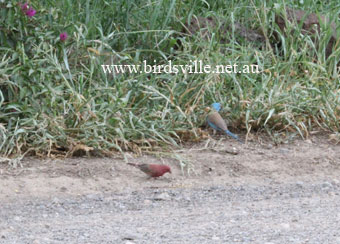
Common names
Ruddy, African fire finch, Common fire finch, Fire finch.
Availability at birdsville
Commonly available all year round
Sexing Ruddie Finches
This species of finch is sexually dimorphic which makes it easy to distinguish the male from female bassicly the male has a deeper reddish colour. It can be difficult to sex young birds until a few feathers start coming through on the male.
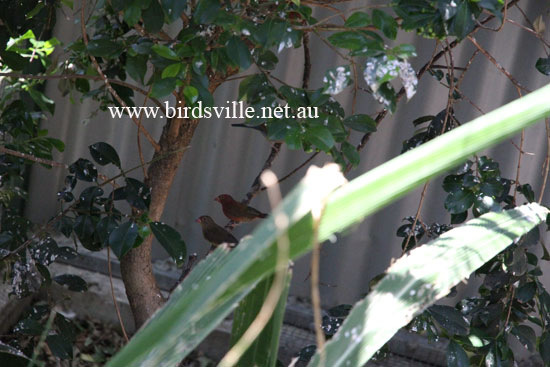
Diet For Ruddie Finches
Seed– A good quality seed mix, Finch blue is advisable as it has a good percentage of canary mix. I stress a good quality seed mix as seed from a general super market may look nicely packaged but it is not what i would consider good quality. Any successful breeder will agree that seed quality and breeding finches is of up most importance if you want them to thrive. They also like Maw which are poppy seeds.
Sprouted seed– Be sure to wash sprouted seeds thoroughly with aviclens to remove any bacteria before feeding to your finches.
Greens– Ruddy finches enjoy seeding grasses, be careful they have not been sprayed with pesticides.Greens- such as endives and kale,
Live foods– such as meal worms and fly pupae play an important role with ruddier
Egg and biscuit formula– an important source
Grit– Fine shell grit with charcoal- very important so supply for calcium.
Vitamin supplement– this should be added to there drinking water as adding to there seed is wasted as they shell the husk and only consume the inside of the seed.
Fresh drinking water
Breeding Ruddie Finches
Ruddy finches can be bred is large cages or aviaries.
Breeding in australia has been made easier than some species due to there domestication they have become free breeders which means they will breed any time of year. In there native lands they have no choice but to breed during the wet the wet season as grass does not grow with out rain. It is encouraged to give your birds a break from breeding during winter. This way you will breed more birds successfully throughout a year as the birds will be in better condition than if they were left to breed all year long.
To start breeding you need to pair your birds up. Luckily ruddy finches are not picky in choosing a partner. Always pick healthy birds in good condition.
Ruddy finches will nest in a variety of nests such as woven wicker nests and or nest boxes. Swamp grass and feathers should be provided for nest construction. The material can be left anywhere inside the enclosure as they will find it. All of which is available at birdsville. They will nest in different areas of the aviary from up high to just a metre above the ground.
Ruddy finches lay 4 to 6 white eggs with an incubation period of 12 days. It is very important to increase the amound of egg and biscuit and meal worms supplied prior to the chicks hatching. The young chicks fledge around 2 weeks after hatching but are still fed for 3 weeks after leaving the nest. It takes some time for young finches to learn how to crack seed.
After breeding they have finished breeding it is important to get rid of the old nest material from inside the nests to allow them to start a fresh nest. This will help stop lice infestations and is more hygienic for your birds
Sexung Ruddy Finches
In adult birds the male is a much brighter red coloration and the hen is a dull earthy colour.
